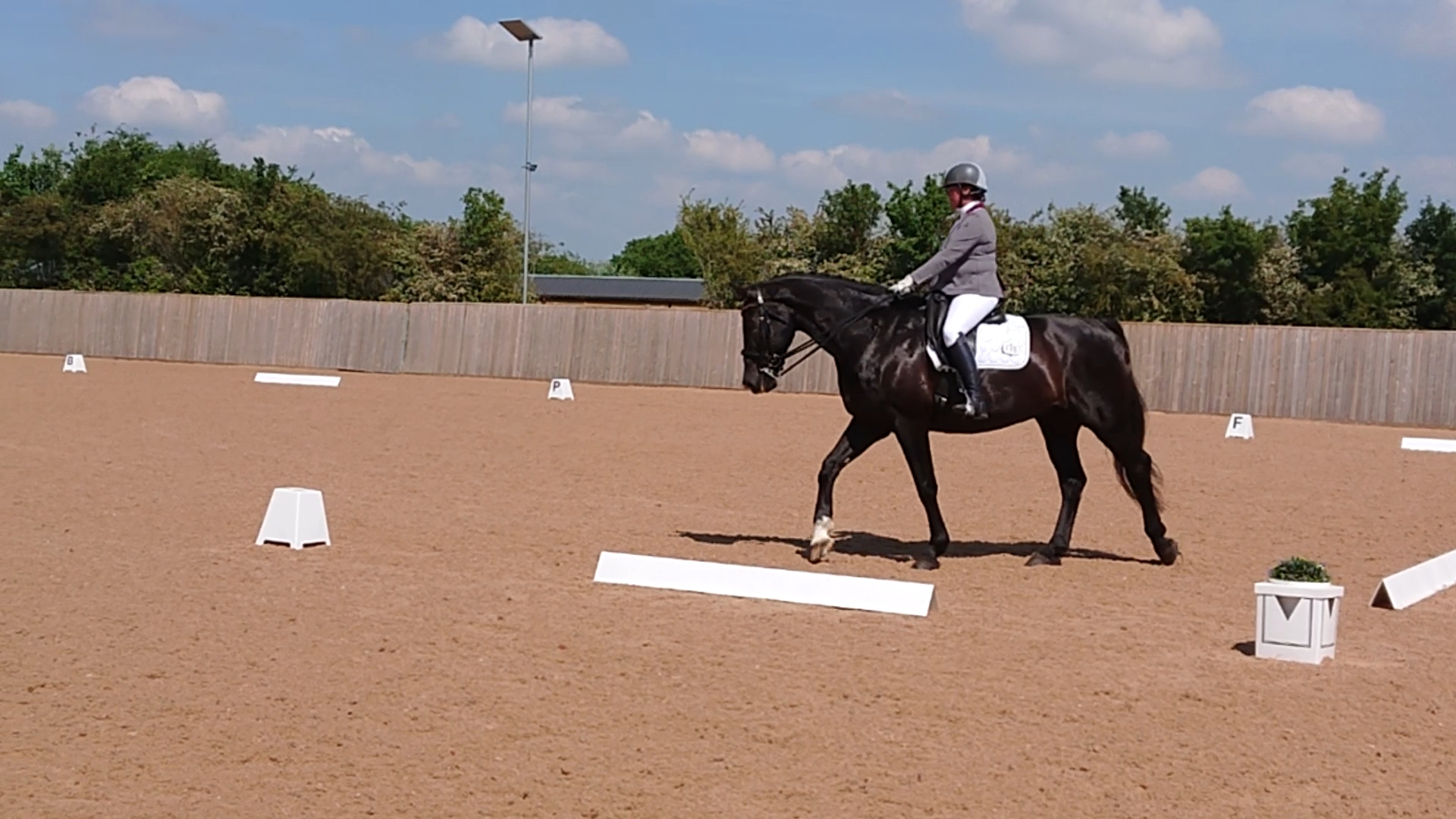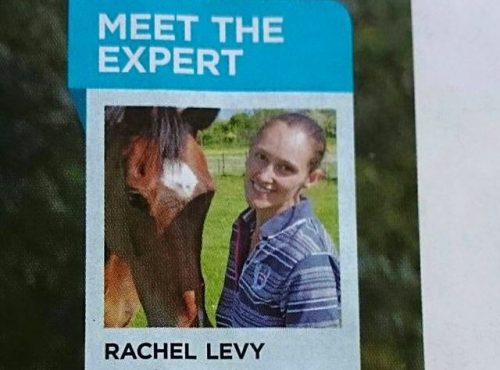Do you need some great suppleness exercises to improve your horse’s way of going? So often as a dressage judge, I see horses struggling to perform movements fluidly due to stiffness. Here are three of my most trusty suppleness exercises and how to do them…
- Extra-bendy 10m circles – In Walk
This involves riding 10 metre circles, where the forelegs follow the circle line and you push the hindquarters out to the outside of the circle in order to get the horse moving almost laterally around the shape. Depending on level of training, you can build up how lateral you ask your horse to be. It might help to think shoulder in for the positioning, but your aim is to get the hind legs crossing over and the horse stepping well underneath it’s body with the inside hind leg, rather than achieving a lot of front leg crossing and your horse going crab-wise around the circle.
You can concentrate on one rein at a time, riding circles for a few minutes one way then changing the rein with a free walk to allow them to stretch between exercises.
Don’t go round and round the circle continuously, that would be a bit much to ask. Instead, ride around the school well inside the track and start a circle as you approach each corner. The inside track is important to give you space to push the hindquarters out without hitting the edge of the arena. If a circle every corner feels too much, do opposite corners, and focus on riding very straight on your inner track down the long sides.
This is a great exercise for the warm up because it’s done in walk. Suppleness exercises can be included in the warm up, just allow your horse at least 5 mins to walk on a loose rein first before picking up the contact. With older or stiffer horses, you can also ride some larger circles in walk for a couple of minutes first to make sure they’re ready to start on smaller, tighter lines.
2. Super Charged Serpentines – In Trot
Your regular three loop serpentine has a lot going for it, but after a while, it needs to be spiced up to keep delivering results where suppleness is concerned. Once your horse finds normal serpentine turns easy to negotiate with the correct bend, it’s time to up the ante.
I have a few different ways to do this…
- Increase the number of loops – the simplest way to increase the difficulty of a serpentine is to make it a four, five or even six loop, depending on the size of your arena. Challenging yourself to see how many loops you can fit in is actually a fun game too, but make sure you aren’t compromising on quality of your turns. Your horse still needs to flow from one bend to the next, with no loss of rhythm or impulsion.
- Add circles into your loop ends – So for a three loop serpentine, you would ride three circles, one in each of the loops of the serpentine. The circles can be a prescribed size, usually 10 metres, or the diameter can fill the width of your serpentine loop. Make sure you don’t overshoot the size of the circle, or let your horse fall in. Concentrate on riding accurate circles with bend through the horse’s body. Be careful when you finish a circle, it’s easy to mess up the change from bend to straight and ride a wavy line across the centre line.
3. Eternal Loops – In Canter
Shallow loops are great suppling exercises in canter. Ride a curve in off the track and then back out to it in the space of a long side. If you’re in a long arena, or your horse is more advanced, try two loops in the space of a long side. Your aim is to introduce a slight bend in the horse’s body, without them changing legs (which is a sign of stiffness, rather than something to be celebrated, in this exercise!).
They’re ‘eternal’ because you can practice several in a row as you go around the arena, staying on the same rein, just don’t overdo this! Make sure the loop is symmetrical, so the furthest point away from the track is as you are level with the EXB line. Experiment with how deep you can make your shallow loops, you’re developing counter canter. If your horse is proficient at counter canter, you can still get a lot out of this exercise as an initial suppler before going into counter canter exercises.
Need more help with suppleness exercises? Feeling a bit bamboozled? Get in touch with me on 07966248916 to chat about your goals and arrange a training session for you and your horse.
Looking for dressage tips? Here’s my insider’s guide to improving your dressage score, Dressage – A Judge’s Eyeview
















